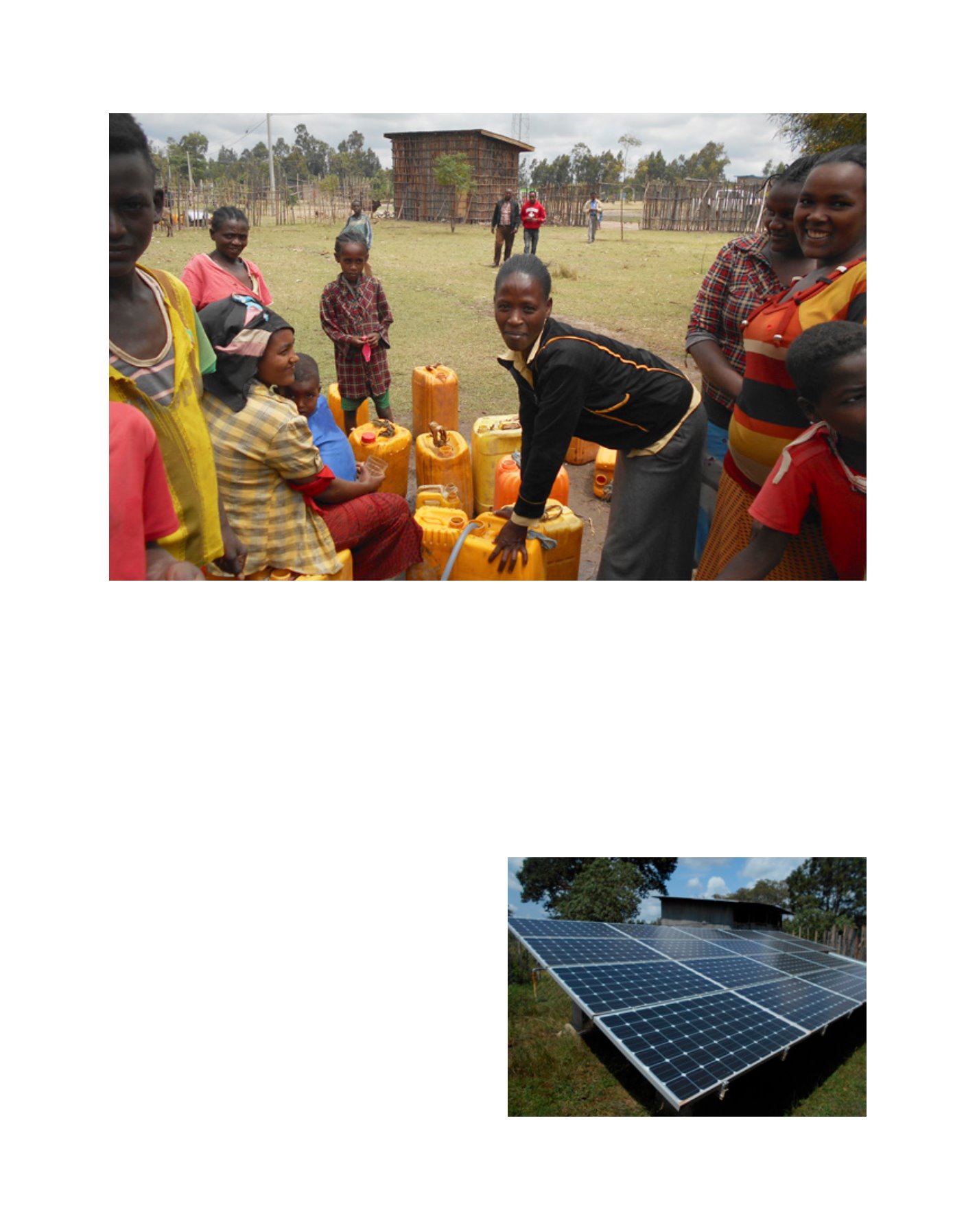

[
] 25
A B
et ter
W
or ld
of experts to determine the cause of a problem and rectify it
quickly. Woreda Water Bureaus therefore provide an impor-
tant sustainability support structure and should be given all
necessary manpower, tools and training.
Based on interviews undertaken with stakeholders by the
PCR mission, neither community members nor woreda staff
have felt sufficiently prepared to intervene in case of system
malfunction. However, at the time of writing, there is a guar-
antee period of about two years, and thus time available for
further enhancing the technical capacities of the stakeholders.
Capacity-building under the project was successful but
should be seen as a continuous process, considering the high
turnover of personnel at woreda and zonal levels. It is worth
recommending that cooperation with the country’s more
hands-on technical colleges and vocational training centres
should be established so as to promote knowledge of solar
and wind pumping systems and to improve familiarity with
the role of the private sector with respect to maintaining
the systems. This should be included in the curriculum of
courses on mechanics and electrics. It would also promote
private initiatives as well as sales of the systems.
Funding of further solar and wind pumping systems
The pilot project came at the right time. The government
was ready to mitigate the water issues by the installation of
diesel pumps, but prices for solar panels dropped dramati-
cally throughout the implementation period. Without the use
of solar and wind energy, the dramatic increase in power
would not have been possible within the original time
schedule. The numbers confirm the success of the project
– studies have been made for 174 systems and tenders have
been prepared by the project agency for at least 60 systems.
The project results have therefore convinced the government
to continue financing and installing photovoltaic and wind
pumping systems.
As more systems are installed and used in the country,
general knowledge will increase about solar and wind pumping
as well as the services available from the private sector. The
government could make it a requirement for all partners in the
water sector that, for example, a lifecycle cost analysis has to
be made up to a capacity of 30kW for each fossil fuel pumping
system and, where an equal or better total cost of ownership is
evident, a solar-powered system should to be chosen.
Community members fetching water from a solar powered water supply source, Yirga Alem, SNNPR
New solar panels replace a diesel generator, near Yirga Alem, SNNPR
Image: AfDB
Image: AfDB
















